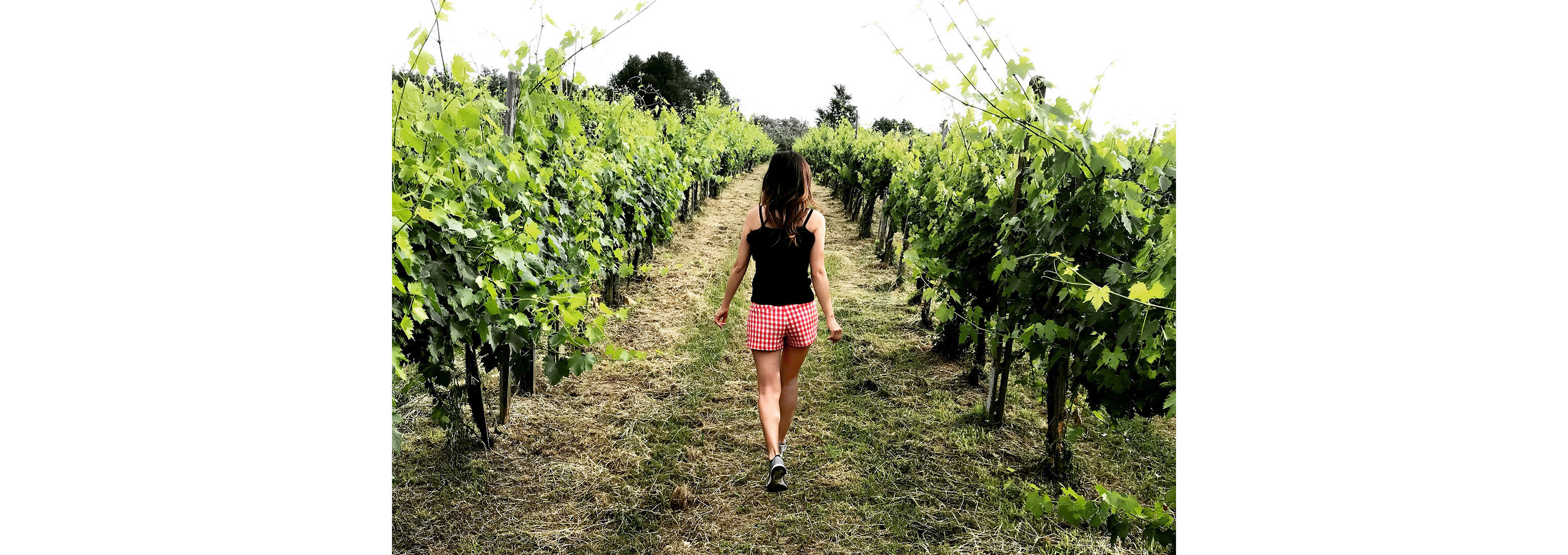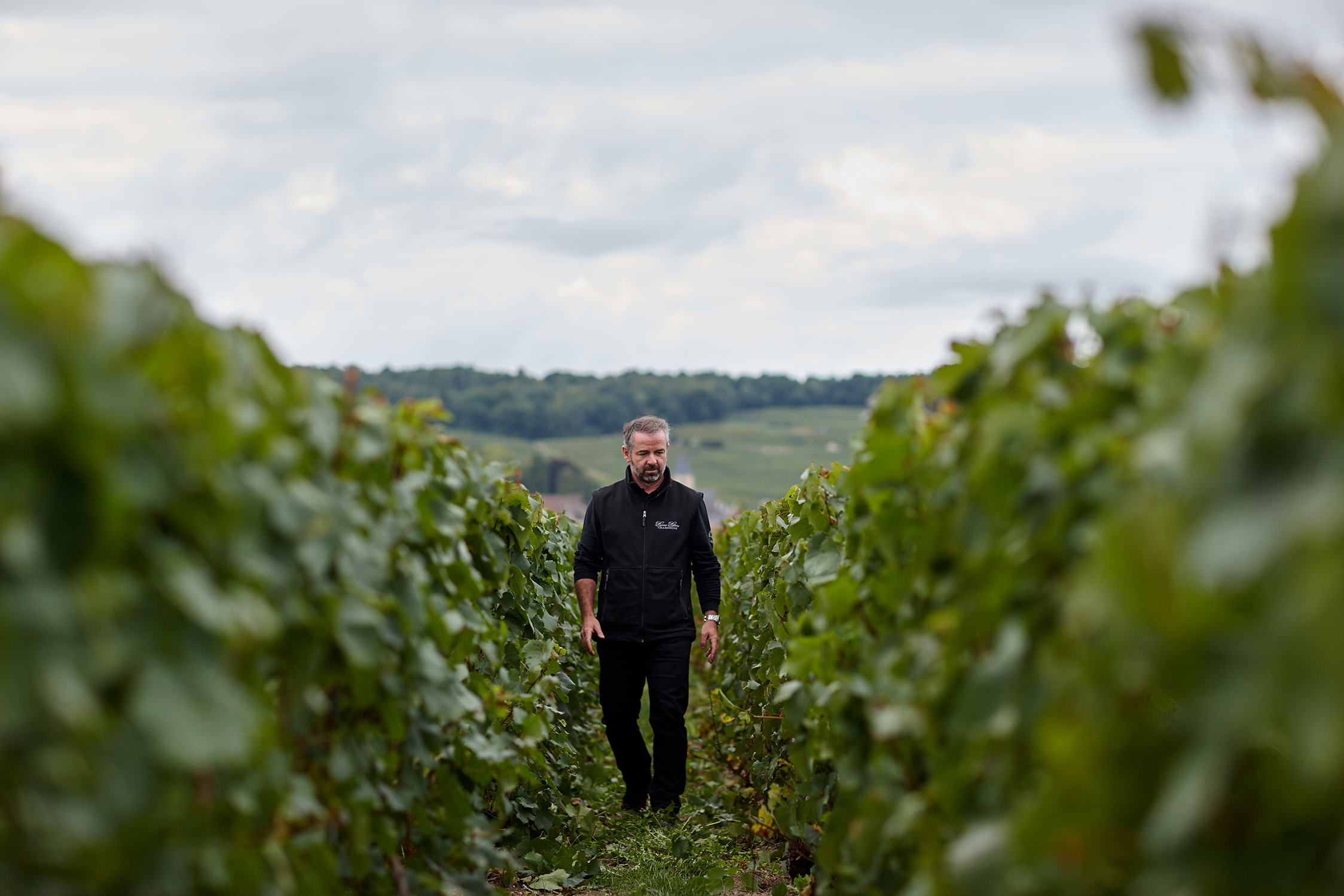Champagne’s international rock star names, such as Moët & Chandon, Perrier-Jouët, or Veuve Clicquot, are just a few of France’s prominent Champagne houses that are famous throughout the world. Enjoyed by European royalty for centuries, today, we are still popping their bottles year-round (hopefully not just during the holiday season). These are the Champagne brands – Grandes Marques as they are referred to in France – who buy their grapes from all over the Champagne region to ensure precision year after year. Their sourcing capabilities allow them to create a consistent classic style we can all depend on.
There are also Champagnes made from smaller, independent producers, which are worthy of discovery yet a bit harder to find outside of the exclusive Champagne region. According to the Champagne Trade Association, these “Grower Champagnes” only comprise about 5 percent of the bottles entering the US. When we compare this to the approximately 80 percent sold in America from the big houses, does it tell us that we should be paying attention to this little segment of bubbly zest? Oui!
What is Grower Champagne?
Grower Champagne, or Récoltant Manipulant (RM) is a classification of wines produced by individual, family-owned vineyards. Think of them as the Corleones of French fizz – a family-run business on family-owned land, producing artisanal wines. Wine importer Terry Thiese affectionately calls them “farmer fizz” and offers this explanation: “You should drink Grower Champagne because, like all hand-crafted, estate-bottled wines, it is not a mere thing, but is indeed a being, expressive of where it grew and who raised it. If you’d rather eat a local, field-ripened summer tomato, rapturous with sweetness, instead of some January tomato you buy at the supermarket, hard as a stone and tasting of nothing, then you should be drinking farmer-fizz!”
By law, a wine with the letters “RM” on the label means that the wine must go from grape to bottle on the estate of production. And because of this intimacy they share with their own land, these bubblies concentrate on showcasing the individual terroir for each vineyard, and, in turn, each year provide an authentic expression of those vineyards. This diversity and character are truly charming.
Independent Champagne producers have achieved a certain prestige among sommeliers who seek to share their discoveries of smaller sparkling gems.
“The Grower Champagne category is one of the most exciting places to find value on a wine list,” says Kester Masias, wine director of NoMad Las Vegas. “Value is increasingly hard to come across in the wines of Champagne. When you consider for a moment what most guests are willing to spend on a bottle of Champagne and you translate that to a grower producer, the value of these bottles becomes even more evident.”
At NoMad Las Vegas, Masias says they try to include and support smaller, quality-minded producers, and grower producers are a natural fit. “The wines from Agrapart & Fils, Chartogne-Taillet, Laherte Frères, and Savart are examples of fantastic wines from grower producers on our list. Frederic Savart’s L’Accomplie highlights a core of bright citrus and ripe orchard fruit with remarkable purity and exceptional balance.”
At their best, Grower Champagnes offer great diversity of style with the most forward-thinking of these small producers being less constrained or influenced by traditional models. Instead, they are embracing more narrowly defined concepts of terroir – or sense of place.
“I recall the first time I tasted Pierre Péters Les Chétillons,” says Masias. “I was blown away by the intensity of the wine, it had pinpoint precision and searing minerality. I was hooked!”
The grapes used to compose this wine come from the beautiful terroir of Les Chétillons at Le Mesnil-sur-Oger. The minerality of the chalky soil is evident in this 100% Grand Cru Chardonnay. As always with a vintage Champagne, Les Chétillons is produced exclusively using the grapes from one harvest year and only during the finest years.

“I have to stay humble and let my terroir do the speaking,” says winemaker Rodolph Peters of Pierre Péters. “We want a pure expression of Chardonnay. It makes real wine. We farm well, capture the sense of the terroir and harvest at the perfect maturity to retain the freshness and natural energy.”
Peters alludes to the idea that perhaps, more than anything, Grower Champagnes encourage a relationship with what’s in the glass, asking questions about identity and origins – something we should be doing more of. It’s ability to express a specific terroir eloquently between various bottlings satiates the modern wine enthusiast’s desire to experience a tastable distinction between Grower Champagnes and the big houses. While there will always be a place for traditional négociant blends, Grower Champagnes’ dynamic diversity continues to enhance and improve what Champagne can be.
Read more at http://davidlv.com/content/growers’-bubbly where this story was originally published.

